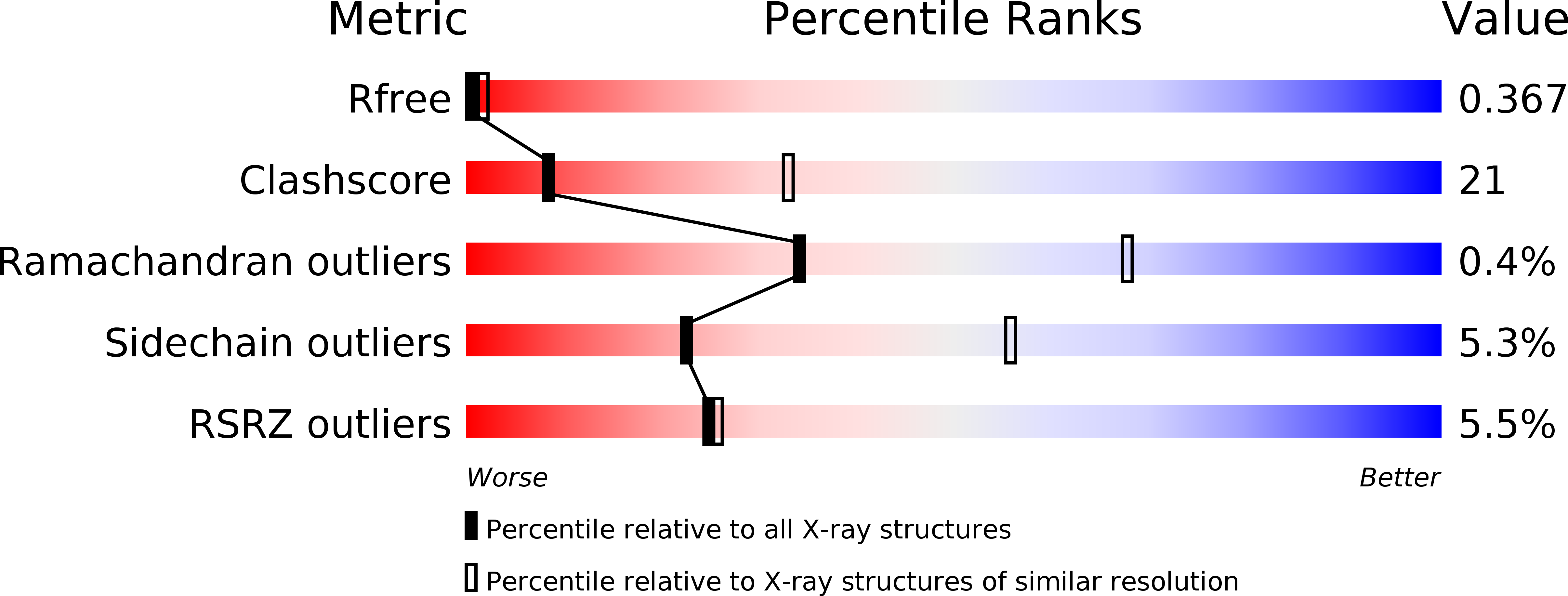
Deposition Date
2017-11-22
Release Date
2018-06-20
Last Version Date
2024-11-06
Entry Detail
PDB ID:
6BPE
Keywords:
Title:
Plasmodium vivax reticulocyte binding protein 2b (PvRBP2b) bound to monoclonal antibody 6H1
Biological Source:
Source Organism:
Plasmodium vivax (strain Salvador I) (Taxon ID: 126793)
Mus musculus (Taxon ID: 10090)
Mus musculus (Taxon ID: 10090)
Host Organism:
Method Details:
Experimental Method:
Resolution:
3.34 Å
R-Value Free:
0.36
R-Value Work:
0.31
R-Value Observed:
0.31
Space Group:
P 1 21 1


